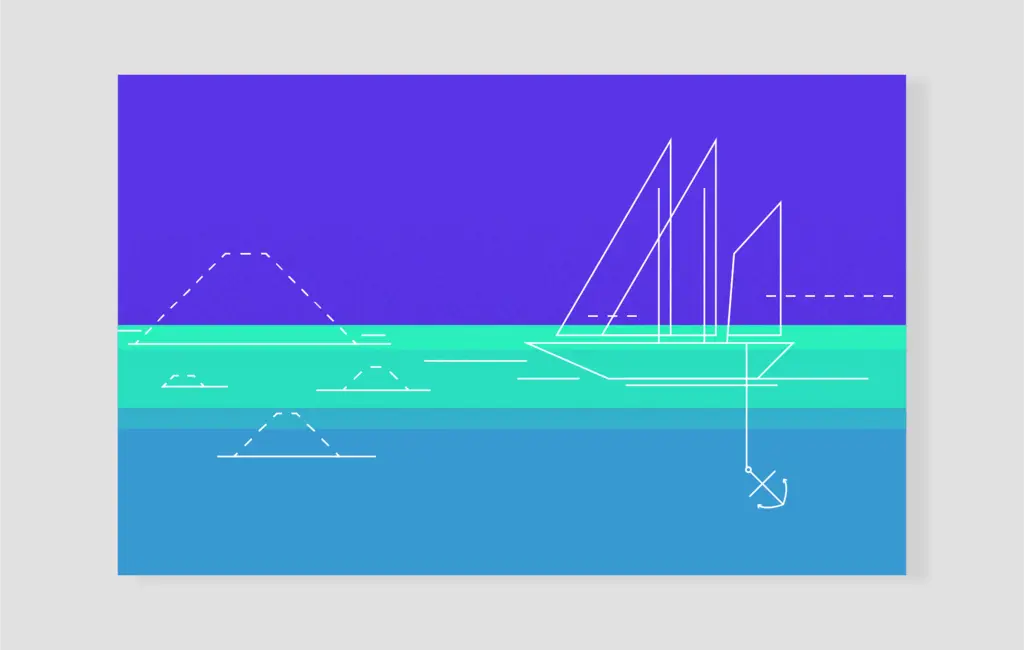
How can we improve? When working in the ever-changing technological environment, answering this question becomes one of the top priorities for teams and leaders. How do we become more cohesive? How can we create work that is more meaningful and bring more value to our clients?
Developing the agile culture of transparency and flexibility in your organisation might shed new light on how teams can improve, become more engaged, and create more valuable work. And all this can be accomplished by simply… listening.
Agile teams believe that the knowledge on how to improve processes already rests within the team members.
Chances are your team already knows the solution you are looking for – simply ask them the right questions.
Retrospectives are meetings carried out on a regular basis that create the opportunity for teams to get people to share their thoughts and ideas on improvements in the way that will benefit the whole organisation.
The secret tacit knowledge
The idea of retrospective meetings is to elicit tacit knowledge about the project and related processes from team members. This knowledge is difficult to write down, visualise or transfer from one person to another. Language skills or humour are good examples, but also innovation, leadership or team culture. Like Michael Polanyi said:
We can know more than we can tell.
That is why during a retrospective meeting questions such as the following should be asked: Why do we work the way we do? What drives us? What are the blockers and threats? What actions can we take to improve?
Teams solve hundreds of little problems every day. But the wisdom on what exactly was done to achieve some goal or what further actions could be taken to double down on team’s strengths might get lost

in people’s intuitive actions. Especially, if you don’t take the time to pause and reflect. The role of a facilitator in such events is to try and grasp this knowledge in a way that can then be transferred to other team members or even whole organisation.
Countless benefits
There many ways how teams benefit from carrying out retrospective meetings and uncovering tacit knowledge within them on a regular basis. To name but a few:
- Inspecting problems before it’s too late. Retrospective meetings help teams to increase transparency. This makes it easier to discover potential issues earlier and propose accurate solutions.
- Increasing team’s efficiency. People often have ideas on how to improve processes they are part of. By giving them the space to express and implement those ideas, you create an environment that might reward you with such spectacular effects as completing the project before the deadline.
- Letting introverts can be heard. Many professionals working in the tech environment are introverts unwilling to share their opinions unless asked for it. They might be keeping secret some of the most valuable insights for your team and your organisation, so make sure you don’t miss it.
- Understanding feelings and emotions. It is crucial to know what motivates your team. Being aware of what makes you effective will help you to double down on your strengths.
- Strengthening team spirit.
Thanks to the fun and engaging nature of retrospective meetings, they will help your team to build stronger relationships.

Retrospective is a child’s play!
https://www.youtube.com/watch?v=J6oMG7u9HGE
Bruce Feiler in his TED talk Agile programming – for your family gives a beautiful proof that this technique is so universal that it can work in many unusual circumstances. Example? His friends use this kind regular agile-inspired meetings to better understand their kids’ needs and ideas, and to improve their family relationships.
How to start
So, if you feel convinced, it’s time to roll up your sleeves. There are many techniques on running effective retrospective meetings, the but sailboat metaphor seems to be the easiest to start with, and enables teams to quickly grasp the idea.
Sailboat
- Imagine that you and your team are together on a boat sailing towards a shared destination.
- Define what is the common goal you are all sailing towards? What are the opportune winds pushing your ship forward (opportunities)? Is your boat in danger of any pirates (threats)? What are the anchors holding the boat from moving (blockers)
- Conclude: What steps can you take to make use of the opportunities? What improvements can be implemented to prevent threats?
You might draw the sailboat on a whiteboard and put on it your team’s ideas written on sticky notes, or use some of the templates on Innovation Games.

When does it work best?
It performs best when you need to see the big picture. It lets you define your environment and choose the best actions to improve your process.
For inspiration check resources like Fun Retrospectives and Retrospective Wiki.

Tips for leaders
Lastly, what can be done to make sure that time spent on reflecting on your project is a valuable investment? Here are some ideas on making the most of it.
- Learn from little successes. Not only take not of the little improvements that your team made during the latest product delivery period, but also ensure that you learn from them. Ask questions: What decision brought you to this solution? What inspired you? Where did you look for advice? Gather this kind of knowledge in one place and define actions that might be taken to implement these ideas into everyday work.
- Focus on workable improvements. Make sure that your team focuses on solutions, not problems. As soon as any obstacle is defined, ask your team: what small improvement can we implement right now to make it better? You might be surprised how many ideas for removing impediments your team already has in mind, but they lack the time or courage to implement them.
- Get creative with techniques. Try different methods of carrying out retrospective meetings. There are plenty to choose from. Some are fun and involve using props, which allows team members to discuss their feelings and concerns in a more relaxed atmosphere. Others will let you see the bigger picture. Futurespectives will allow your team to define the next steps that should be taken to improve.
- Experiment with tools. If your team is distributed, you might want to have a look at some tools that will help your team engage more during calls. You can try gamified retrospective templates by Innovation Games or virtual whiteboards like Mural or Realtimeboard that often contain customisable templates. It is also possible to utilise a project management tool such as Trello. Find an example here.
- Ask questions. A lot of them. Provoke your team to look for reasons for the actions that were taken. There are no right or wrong answers – pausing and reflecting on your process might be the best way to extract collective wisdom of your team.
What are your experiences with retrospective meetings? Any tips, tricks or valuable lessons? Let me know in the comments below.



